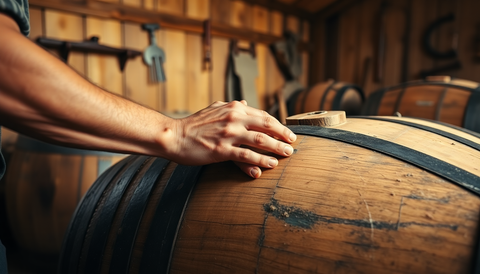As the sun dips below the horizon, casting a warm glow over the undulating vineyards of McLaren Vale, the winemakers of this renowned South Australian region gather to discuss the most critical decision of the year - when to harvest their grapes. The timing of the grape harvest is a delicate balance, a dance between science, experience, and intuition, as winemakers strive to capture the perfect moment when the fruit has reached its peak ripeness and flavor profile.
The Importance of Timing
In the world of winemaking, the timing of the grape harvest is paramount. It is the moment when the winemaker's vision for the vintage is set in motion, as the quality and character of the wine are largely determined by the state of the grapes at the time of picking. Too early, and the grapes may lack the necessary sugar and flavor development; too late, and the grapes could become overripe, leading to unbalanced or even undesirable characteristics in the final product.
"Harvest timing is the single most important decision we make all year," says Sarah, the head winemaker at McLaren Vale Cellars. "It's the culmination of all our hard work, and it's crucial that we get it right. Even a day or two can make a significant difference in the quality and style of the wine."
Monitoring the Vines
The journey to the perfect harvest begins long before the grapes are ready to be picked. Throughout the growing season, winemakers closely monitor the development of their vines, tracking a range of factors that will inform their eventual harvest decision.
"We're constantly out in the vineyards, checking the vines and tasting the grapes," explains Sarah. "We're looking at things like sugar levels, acidity, tannin development, and overall flavor profile. We want to make sure the grapes are reaching their full potential, but not going beyond it."
One of the primary tools winemakers use to track grape maturity is regular testing of the fruit. By analyzing the sugar content, acidity, and pH levels, they can get a clear picture of how the grapes are progressing and when they might be ready for harvest.
"We'll typically start testing the grapes a few weeks before we think they might be ready," says Sarah. "We'll do it every few days, sometimes even daily, as we get closer to the ideal picking window. It's a delicate dance, trying to time it just right."
Factors Influencing Harvest Timing
While the scientific data is crucial, winemakers also rely on their years of experience and intimate knowledge of their vineyards to make the final call on when to harvest. A range of factors can influence the optimal timing, including:
Weather Conditions
The weather during the growing season can have a significant impact on grape maturity and flavor development. Warm, sunny days promote sugar accumulation, while cooler temperatures and rainfall can slow down ripening and preserve acidity.
"We're always keeping a close eye on the weather forecasts," says Sarah. "If we see a heatwave or a cold snap coming, we'll adjust our harvest plans accordingly. We want to make sure we pick the grapes at the perfect moment, before any extreme weather can affect the quality."
Vine Health and Vigor
The overall health and vigor of the vines can also play a role in determining the ideal harvest time. Factors such as soil quality, irrigation management, and disease pressure can all influence the rate of grape maturation.
"If we have a particularly vigorous or stressed vine, it might reach optimal ripeness earlier or later than a more balanced vine," explains Sarah. "We have to take that into account when we're making our harvest decisions."
Desired Wine Style
The winemaker's vision for the final product can also shape the timing of the harvest. Some styles, such as lighter, more delicate wines, may require earlier picking to preserve acidity and freshness, while bolder, more structured wines might benefit from a later harvest when the grapes have had more time to develop complex flavors and tannins.
"We're always thinking about the style of wine we want to create," says Sarah. "That helps guide our harvest decisions, as we try to pick the grapes at the point that will best support our winemaking goals."
The Harvest Decision
As the harvest approaches, the winemakers of McLaren Vale Cellars gather to review all the data and observations they've collected throughout the growing season. They'll taste the grapes, analyze the test results, and consider the weather forecast, all while drawing on their years of experience to make the final call.
"It's not an easy decision, and there's always a bit of uncertainty involved," admits Sarah. "But we've developed a deep understanding of our vineyards and our grapes over the years. We know what to look for, and we trust our instincts to guide us to the right moment."
Once the decision is made, the race is on to get the grapes off the vines and into the winery as quickly and efficiently as possible. The harvest crew springs into action, carefully picking and transporting the precious fruit to ensure it arrives at the crush pad in pristine condition.
The Rewards of Timing
As the winemakers of McLaren Vale Cellars watch the first fermentation bubbles begin to form in the tanks, they know that their hard work and careful decision-making have paid off. The grapes they've harvested are the foundation for the wines that will ultimately grace the shelves of their cellar door and find their way into the hands of discerning wine lovers around the world.
"When you get it right, it's an incredible feeling," says Sarah. "You know that you've captured the essence of the vintage, the perfect expression of the grapes and the terroir. That's what makes all the effort and attention to detail worthwhile."
In the end, the art of timing the grape harvest is not just a technical exercise, but a deeply personal and intuitive process that reflects the winemaker's intimate connection with their land and their craft. It's a dance between science and instinct, a delicate balance that ultimately shapes the character and quality of the wines that will delight and inspire wine enthusiasts for years to come.




Comments (0)
There are no comments for this article. Be the first one to leave a message!